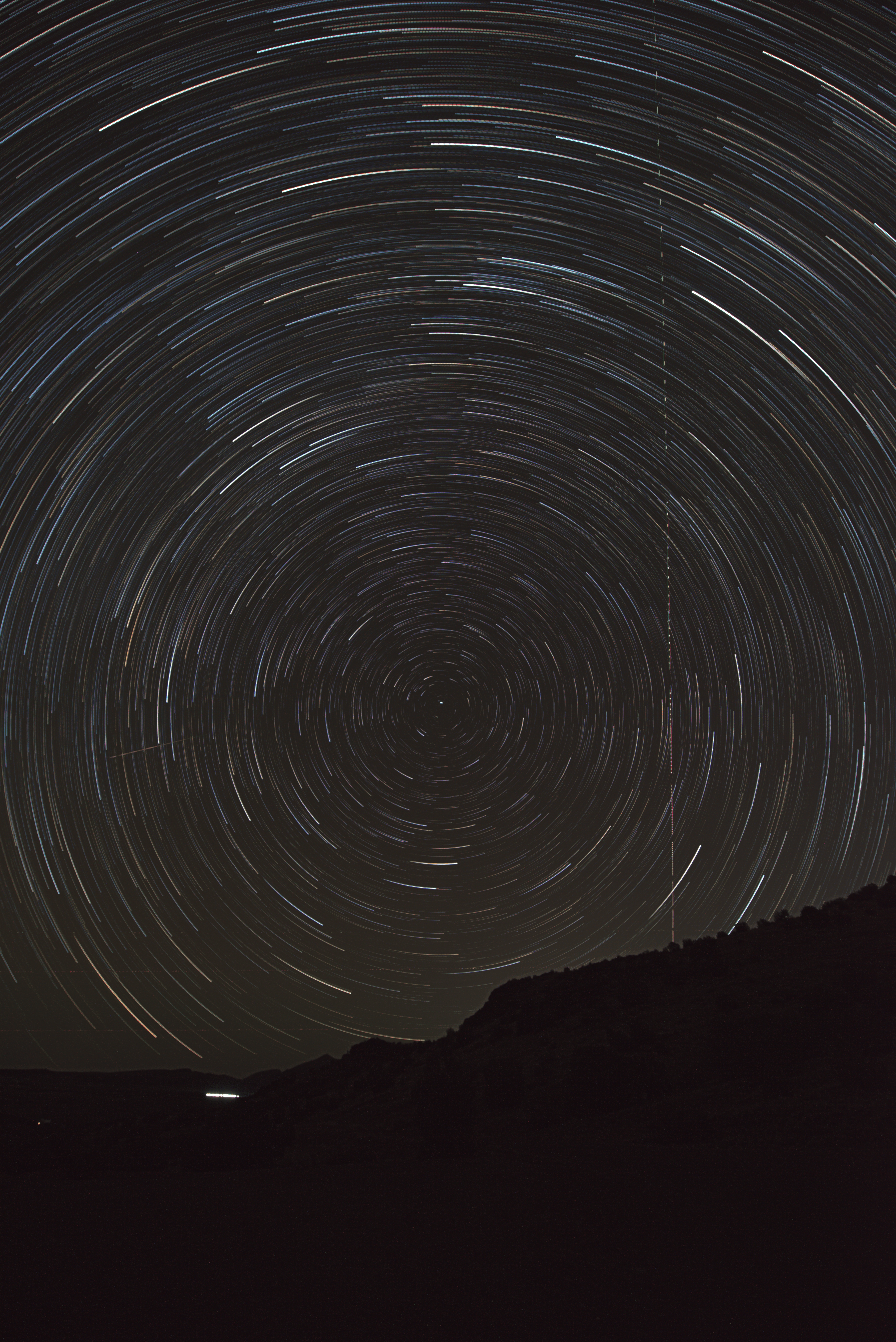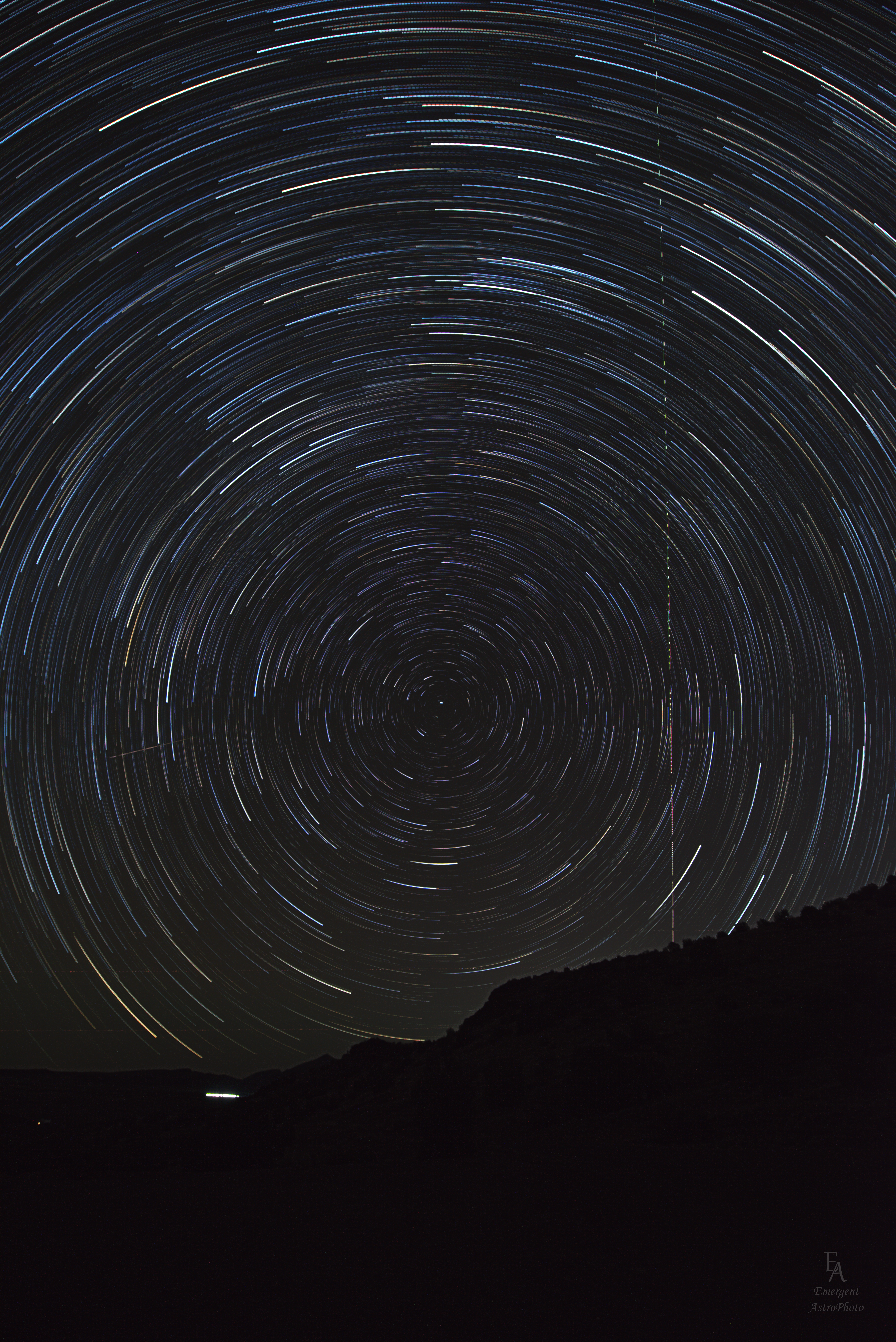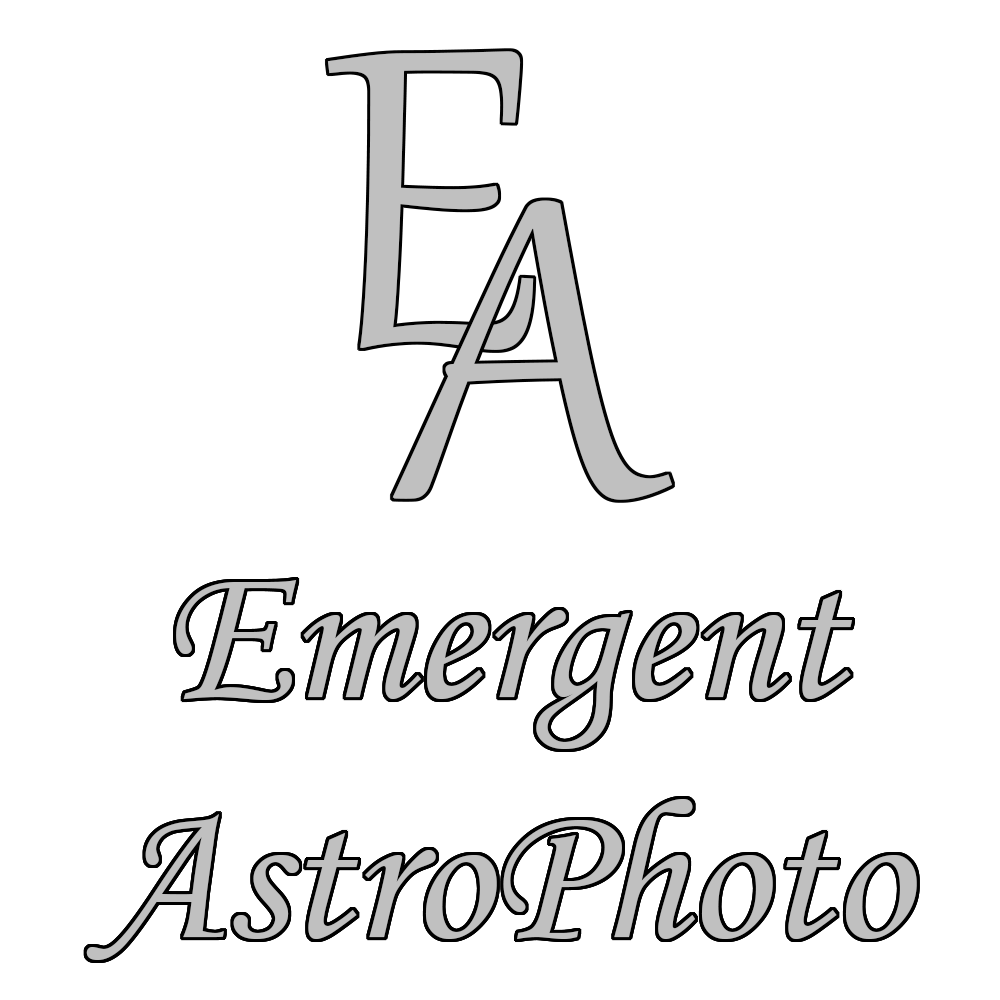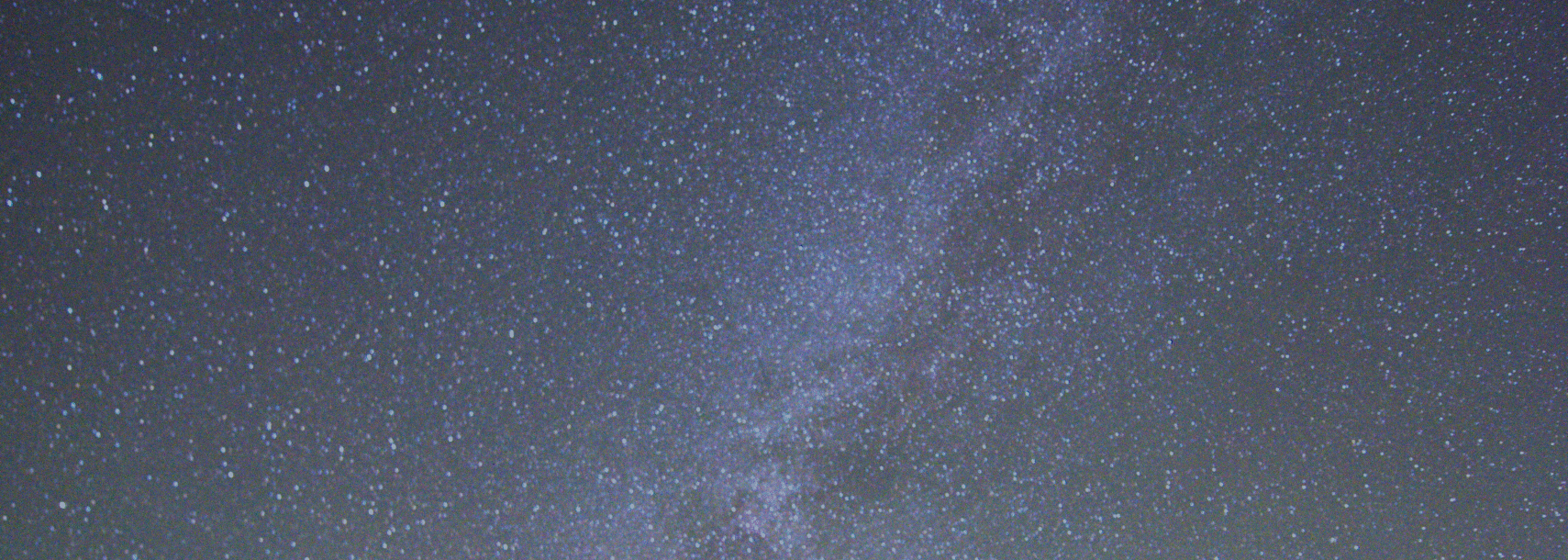A new life, a new direction, a return to an adventure.
I began this journey almost a decade ago. There have been roadblocks and setbacks along the way. I want to share with you my experiences on this journey through our universe, seen through a lens. Our path begins in Socorro, NM, under a new moon with my D810, my partner in crime, and our loyal companions.

Star Trails Over the Horizon. Socorro, NM September 2025
Preprocessing

Star Trails Over the Horizon. Socorro, NM September 2025
Postprocessing
The kit is simple, the setup tedious, and the lessons plentiful. I’ve spent countless hours researching to be as prepared as possible so I wouldn’t be running blind in the process. I began to realize that I could spend a lifetime thinking and planning for astrophotography and never reach a level of comfort to just go and experience it. I wasn’t going to be any more prepared by reading more articles, nor would I be any more capable. The time had come to take the leap, get out with the camera, and capture some photons on the sensor. The setup, while simple, was effective: the D810 on a tripod, seeing the stars through the 14-24 f/2.8 lens tethered to my laptop. The target: unclear. The plan: nonexistent. The excitement… palpable. I’ve spent most of my life under the stars in a remote town in northern New Mexico, where the skies are among the darkest I’ve seen. Never have I felt more calm or serene than when under the blanket of the night sky.
The night began late; it was already approaching midnight when we arrived. The air was crisp with a slight breeze. After setting up the imaging site, the time to begin imaging had arrived. The first task was to find focus. This proved to be much more tedious than I had anticipated. I hunted for focus back and forth for almost an hour before things began to become clear. Now I just had to start exposing. What was the target, you ask? Great question—I didn’t know either. I decided an image of the Milky Way would be my start. I spent another hour or so composing my shot. The foreground wasn’t all that interesting, so the goal was to have the foreground show more as a silhouette and focus more on the Milky Way itself. There was a lot of trial and error involved, and I relied heavily on the expertly calibrated perspective of my beautiful partner in life. After that shot was secured, I wanted a shot of Orion, which had just crested over the horizon of a large rock outcropping. Both images were single-shot exposures: 25 seconds, 1600 ISO at f/2.8. Both images were successful; however, both have a lot of room for improvement. Running late into the night by this point, I wanted to get an image requested by my girlfriend: star trails. I had never attempted star trails before but had a decent idea of where to start. I bumped my ISO to 1250, my aperture to f/4.0, and set Backyard Nikon for 144 exposures. This would give me around an hour of total exposure time to work with. After all exposures had finished, it was time to stack them. Unsure of what software to use, I started researching and decided to try Sequator. This endeavor ended up being a lot simpler and more straightforward than I had anticipated. After some color corrections, the image above on the right is my final product at the moment.
A Conclusion to my First Steps
The night had come to a close, and I had taken three images that I am quite proud of. Through trial and error, I discovered many things I want to improve upon. I want to capture more images and streamline my setup, better plan my exposures and composition, and gain more experience in editing to create captivating images. Most of all, I want to make more memories along this journey with the ones I love. I hope you enjoyed this step in our journey and will follow along for more of this story.


Leave a Reply